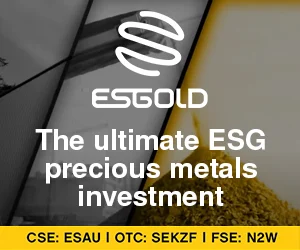In the ever-evolving landscape of precious metals, silver has often been overshadowed by its more illustrious counterpart, gold. However, recent analyses suggest that silver may not only weather the anticipated dip in industrial demand next year but could also outperform gold in the latter half of 2025. This article delves into the factors influencing silver’s performance, its industrial applications, and the broader economic context that shapes its future.
Understanding Silver’s Industrial Demand
Silver is unique among precious metals due to its dual role as both an investment asset and a critical industrial commodity. It is widely used in various sectors, including electronics, solar energy, and medical applications. The upcoming year is projected to see a decline in industrial demand for silver, primarily driven by economic slowdowns and reduced manufacturing activity. Factors such as geopolitical tensions, inflationary pressures, and shifts in consumer behavior contribute to this anticipated dip.
Despite these challenges, silver’s intrinsic value as a versatile metal remains intact. Industries that rely on silver are continuously innovating and finding new applications, which may help stabilize demand in the long run. For instance, the growing emphasis on renewable energy technologies, particularly solar panels, underscores silver’s importance in the transition to a greener economy.
Silver vs. Gold: A Comparative Analysis
While gold is often viewed as a safe haven during economic uncertainty, silver presents a compelling case for investors looking for growth potential. Historical trends indicate that silver tends to outperform gold during periods of economic recovery, as industrial demand picks up and investment interest surges. Analysts predict that the second half of 2025 could be a pivotal moment for silver, as economic conditions improve and industrial demand rebounds.
Moreover, silver’s lower price point compared to gold makes it more accessible to a broader range of investors. This accessibility can drive increased interest and investment, particularly among retail investors seeking to diversify their portfolios. As inflation concerns persist and central banks continue to navigate complex monetary policies, silver may emerge as an attractive alternative for those looking to hedge against economic volatility.
The Role of Supply and Demand Dynamics
The supply and demand dynamics of silver are crucial in understanding its future performance. The silver market is characterized by a relatively tight supply, with mining production facing challenges due to environmental regulations and declining ore grades. This limited supply, coupled with potential increases in demand from both industrial and investment sectors, could create upward pressure on silver prices.
Additionally, the recycling of silver plays a significant role in the market. As technology advances, the efficiency of silver recovery from electronic waste and other sources improves, potentially offsetting some supply constraints. However, the balance between supply and demand will ultimately dictate silver’s price trajectory in the coming years.
Economic Indicators and Market Sentiment
Economic indicators such as inflation rates, interest rates, and overall economic growth significantly influence silver’s performance. As central banks grapple with inflationary pressures, the response to these challenges will shape investor sentiment towards precious metals. A shift towards more accommodative monetary policies could bolster silver prices, especially if accompanied by a resurgence in industrial demand.
Market sentiment also plays a critical role in determining silver’s attractiveness as an investment. As awareness of silver’s potential as a hedge against inflation and economic instability grows, more investors may turn to silver as a viable alternative to traditional assets. This shift in sentiment could further enhance silver’s performance in the latter half of 2025.
Conclusion: A Bright Future for Silver
In conclusion, while silver may face challenges in the short term due to anticipated dips in industrial demand, its long-term prospects remain promising. The unique characteristics of silver, combined with its essential role in various industries and its potential to outperform gold, make it an intriguing investment option. As we look towards the future, silver’s resilience and adaptability in the face of economic fluctuations could position it as a key player in the precious metals market, particularly in the second half of 2025. Investors and industry stakeholders alike should keep a close eye on silver’s evolving narrative as it navigates the complexities of the global economy.




